This curious video advocates for a new type of nuclear reactor (that runs on thorium) over traditional uranium reactors and chemical fuels. In doing so it gives a useful, but quick, explanation of how energy is produced from these sources.
Tag: nuclear energy
Living next to Chernobyl
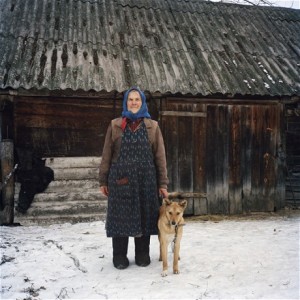
We were talking about environmental disasters, specifically nuclear radiation, and looking at pictures of Chernobyl, when a student asked if anyone still lived there. The city and surrounding region was evacuated, however some 1,200 people returned to their homes. Holly Morris has an interesting article on how “The women living in Chernobyl’s toxic wasteland” survive. Curiously, 80% of the remaining survivors are female.
Energy in the Nucleus of the Atom
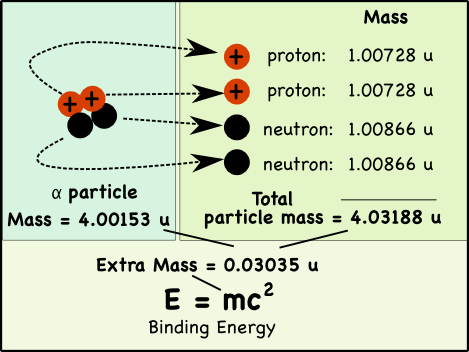
If you pull apart the nucleus of an atom, you’ll find that the mass of its parts is greater than the mass of the original nucleus. That extra mass is where nuclear energy comes from; it’s called the binding energy.
How so?

Take a helium atom for example. Its nucleus typically has two protons and two neutrons*, which in nuclear physics is usually called an alpha particle (α).
While we usually say that the mass of a proton is 1 atomic mass unit (u), its actually a little heavier. The mass of a proton is 1.00728 atomic mass units (u), while neutrons weigh 1.00866 u.
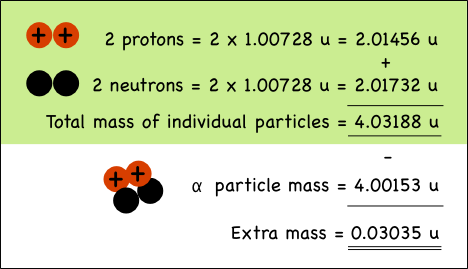
The combined mass of the two protons and two neutrons in the helium nucleus is 0.03035 atomic mass units more than the mass of a helium nucleus made up of the very same particles.
Why?
The one equation that everyone remembers from Einstein (perhaps from all the t-shirts) is:
![]()
Energy (E) is equal to mass (m) times some constant (c is the speed of light) squared. What it means is that mass is energy, and vice-versa.
When the four nucleons combine, the extra mass is transformed into the energy that holds them together in the nucleus of the atom. The mass can be directly converted to energy, the binding energy of the atom.
How much energy is released?
Somewhere around 10,000 times more energy is released from a single nuclear reaction compared to a single chemical reaction (like the combustion of TNT).
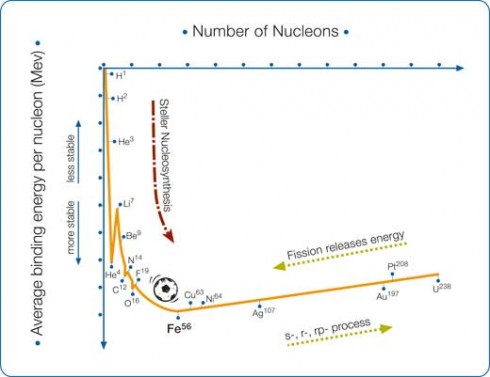
Footnotes
* Helium with two neutrons would be written ![]() , where the bottom number is the number of protons and the upper number is the atomic mass, which is the sum of the number of protons and the number of neutrons.
, where the bottom number is the number of protons and the upper number is the atomic mass, which is the sum of the number of protons and the number of neutrons.
We are Stardust: Supernovas and the Heavy Elements
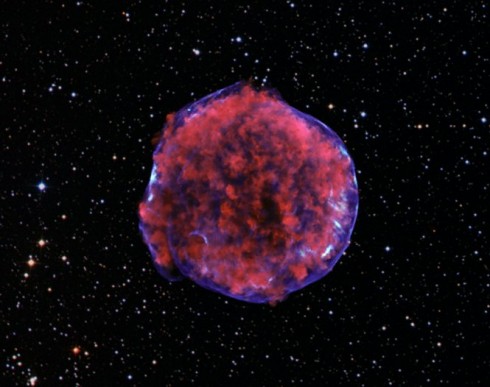
We could have been talking about the nuclear meltdowns in Japan, but I’m not sure. Our conversations tend to wander. I remember trying to explain where the carbon atoms, that are so essential for life, came from. It’s been a while since we saw this topic, so I figured it wouldn’t hurt to go it over again. And then I found this wonderful image of the Tycho supernova from the Chandra space telescope. Supernovas are where the heaviest atoms are formed.
In the beginning … the big bang created just the smallest elements, hydrogen and helium. But even these tiny things have gravity, so they pull each other together until there’s so much stuff that the pressure at the center of the clump is enough to fuse hydrogen atoms together.
Now fusion is easy to confuse with chemical bonding that occurs around us every day. After all, the hydrogen in the atmosphere is usually in the form of H2, which is two hydrogen atoms bonding together by shared electrons.
With fusion, on the other hand, the single protons that make up the nuclei of the hydrogen atoms are pushed together to create a bigger atom, helium. I say pushed together, because it takes a lot of pressure to fuse atomic nuclei. And it also releases a lot of energy. Notice all that heat and radiation that comes from the Sun? All that energy was created by the fusion of hydrogen atoms; the smallest element, hydrogen, fuels the stars.

The huge amounts of energy released by fusion makes fusion power one of the holy grails of nuclear energy research. If we were able to create and control self-sustaining fusion reactions, just like what happens in the Sun, we would have a source of tremendous energy. There is a lot of research in this area. Some people have figured out how to build fusion reactors in their basements, but these use a lot more energy than they produce so they’re not very useful as a power plant (Barth, 2010). The ITER reactor, currently being built in France, aims to be the first to produce more electricity than it uses.
Now back to the stars. Hydrogen atoms fuse to form helium, but it takes a lot more pressure to create larger atoms: carbon has six protons, nitrogen seven, and oxygen eight. These elements are essential for life (as we know it). The only time stellar forces are great enough to produce these are when stars explode; an exploding star is said to have gone nova. Bigger atoms, like iron (26 protons), gold (79 protons), and uranium (92 protons) need even greater forces, forces that only occur when the largest stars go supernova.
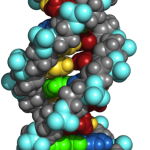
So if these elements are only produced in novae and supernovae, how did they get to Earth? How did they get into your DNA?
Well when stars explode, a lot of these newly formed elements are blasted off into space. It’s a sort of cosmic dust. We could even call it stardust. It’s matter, just like the hydrogen and helium from the big bang, only bigger, which means they have more mass, which means they have more gravity.
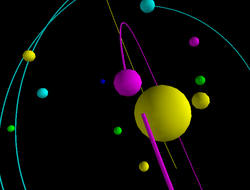
The gravity pulls the stardust together with the hydrogen and helium sill floating around in space (there’s a lot of it), to form new stars, and, now that there are the larger elements to create them, rocks, asteroids, and planets.
So, if you think about it, some stars needed to have been formed, lived their lives (which consists of fusing hydrogen atoms until they run out), and exploded to create the matter that makes up the planets in our solar system and the calcium in our bones, the sodium in our blood, and the carbon in our DNA.
Notes:
1. Lots of information about Tycho’s Star on SolStation.com.